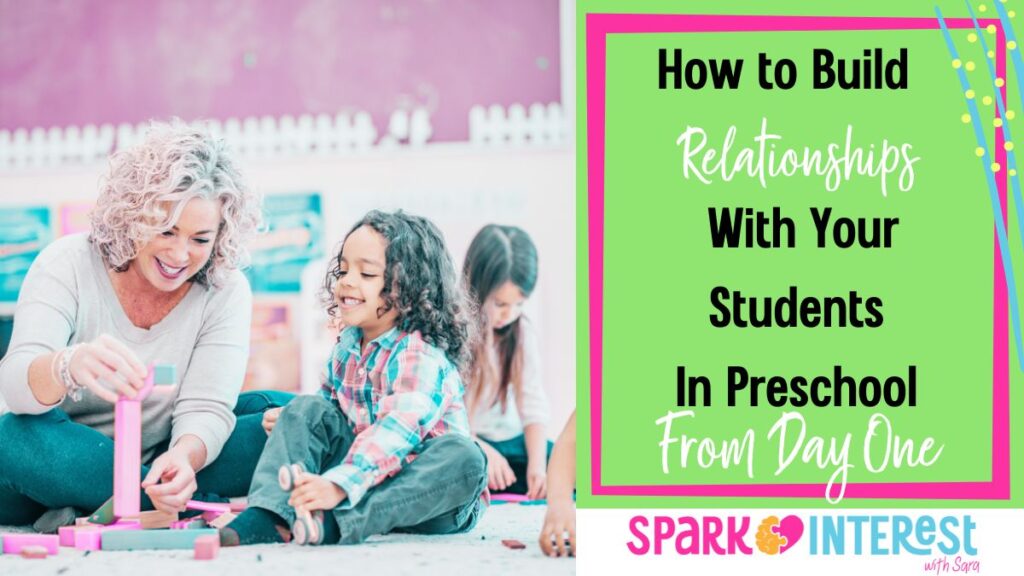As a preschool teacher, you already know relationships are everything. But maybe you’ve found yourself wondering:
- How do I build relationships with students from day one?
- Why is it so important to build strong connections with students?
- What can I actually do to connect with students in the classroom, especially early in the year?
If you’re nodding along, you’re in the right place.
In this post, I’ll share some simple, effective, and heart-centered strategies for how to build relationships with students, especially our littlest learners. These ideas will help you create a warm, welcoming classroom community where every child feels seen, safe, and valued from day one.
Because when connection comes first, everything else, learning, routines, behaviour and trust, flows so much more smoothly.
Ready to make relationships your #1 back-to-school priority? Let’s dive in!
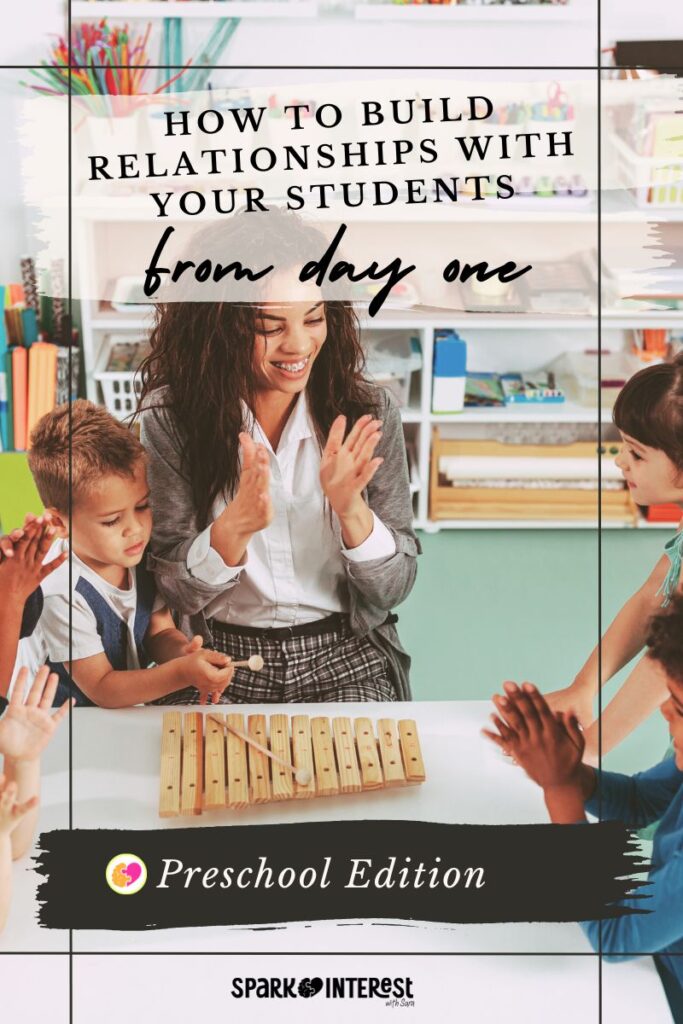
A Real-Life Lesson in Connection
Early on in my teaching career, I met a little boy named Luke.
Luke was that kid. The one who always seemed to be in trouble.
He’d roll around during group time.
He couldn’t keep his hands to himself.
He’d loudly say “no” to the most basic requests and often acted like he didn’t care about being kind or following classroom expectations.
HELP! I was avoiding my student…
If I’m being honest, my natural instinct was to avoid interacting with him. It just felt too hard.
I had no idea what to do, and avoiding him felt easier in the moment.
But the more I pulled away, the worse his behaviour became. And deep down, I knew: something had to change.
So the next day, I made a decision.
I stopped avoiding Luke and started intentionally trying to connect with him.
Instead of seeing him as a problem to manage, I started seeing him as someone I needed to understand. Someone I could build a relationship with.
I tried a few simple but intentional strategies to connect with him and slowly, something shifted. We started to build trust. A friendship. A real connection. And as our relationship grew stronger, his behaviour started to change too.
Luke taught me one of the most important lessons in early childhood education:
If you want to know how to build relationships with students, start by seeing the child behind the behaviour.
Why Build Relationships with Students?
At the start of a new school year, it’s easy to get caught up in all the things-routines, assessments, curriculum, classroom setup.
The to-do list feels never-ending.
But let me say this loud and clear: relationships are not an extra-they’re the foundation.
If you spend the first few weeks focused on how to build relationships with students, everything else becomes easier.
Here’s what happens when connection comes first:
- Fewer behaviour challenges
- More engagement and participation
- Greater emotional safety and trust
- Stronger peer relationships
- Calmer classrooms (and calmer teachers!)
When children feel truly seen, heard, and safe, they’re more likely to engage, cooperate, and thrive.
So before we dive into practical strategies, here’s something to reflect on:
What can we do, intentionally and consistently to build not only positive teacher-child relationships, but also help children build meaningful relationships with each other?
Let’s explore that next.
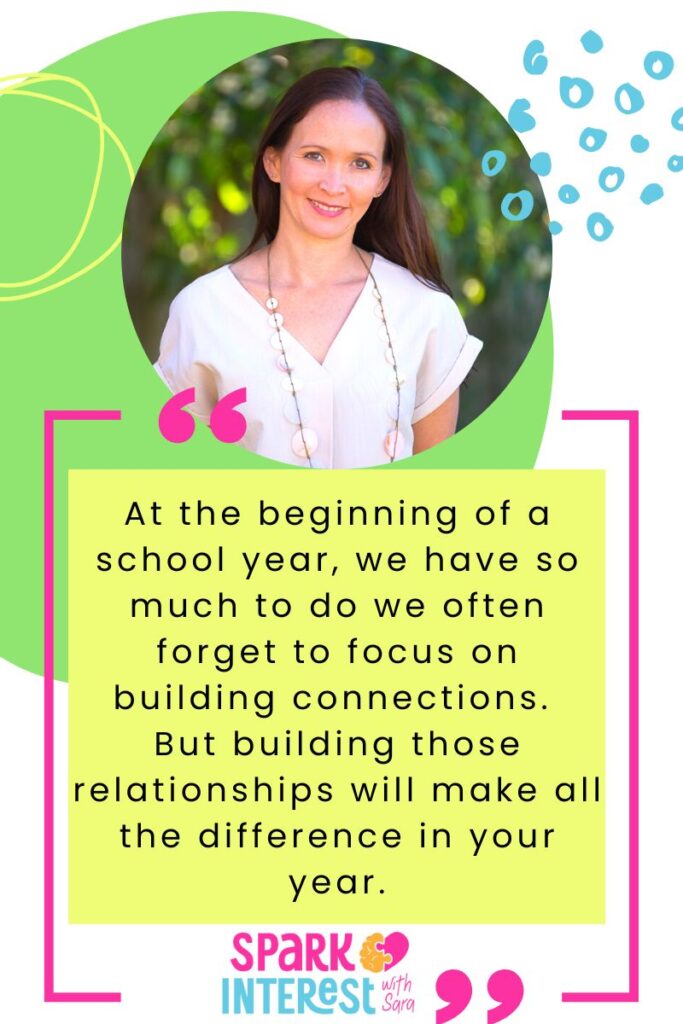
How to Build Relationships with Students from Day One
Connect With Your Students
a. Greet your preschoolers by name.
Be genuinely happy to see them each morning. A warm greeting, a smile, or a special hello ritual can set the tone for the entire day. Consider creating a morning routine that includes different greeting choices—like high-fives, waves, or hugs—so children can choose what feels good for them.
b. Play together—just for fun!
One of the most powerful ways to connect with preschoolers is by getting down on the floor and playing. Put on a silly hat in the dress-up area. Build in the block corner. Play music and dance around the room. When you play, laugh, and show your joy, your students learn that you’re human—and that you’re safe to be themselves around.
c. See each child as an individual.
Take time to observe. Notice what lights each child up—their interests, strengths, and unique quirks. Then, weave those into your classroom life.
Does one child love horses? Create a horse ranch dramatic play area.
Got a dancer in the group? Host a Friday afternoon dance-off!
Read books about the things they love. Celebrate their talents. When children feel seen, heard, and valued for who they are, everything changes.
This is truly the heart of how to build relationships with students in preschool-by honoring who they already are.
d. Foster open communication.
Let your students know they can come to you, no matter what. For more reserved children, this might mean simply sitting beside them at an activity,no pressure, just presence. Sometimes your quiet presence is all it takes to start building trust.
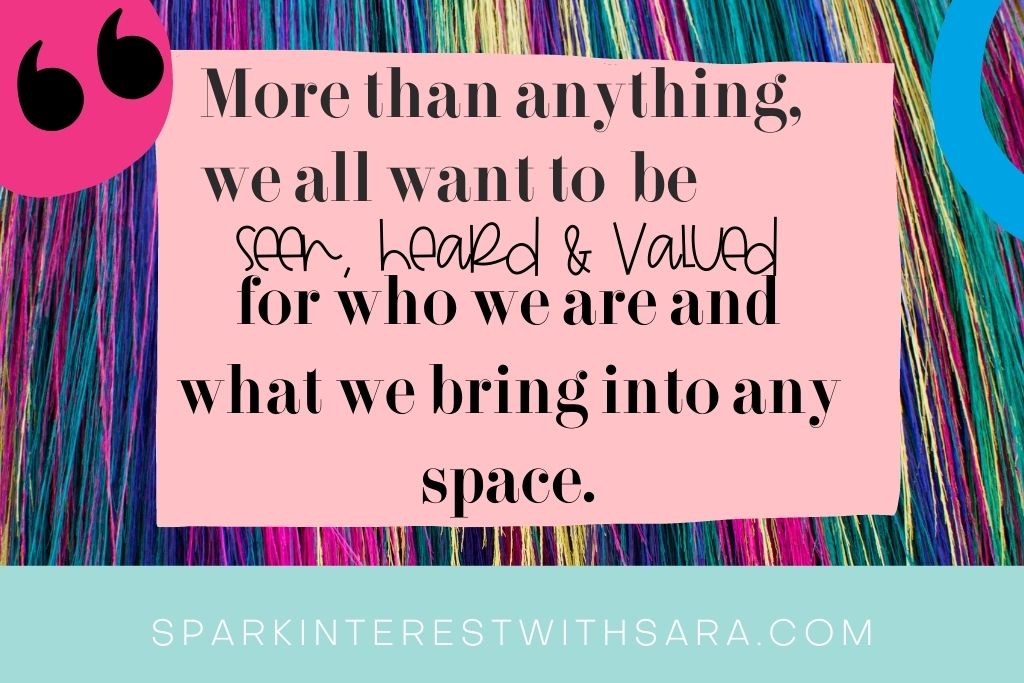
e. Create opportunities for connection all day long.
From transition times to snack breaks, there are little moments throughout the day that offer chances to connect. A gentle touch on the shoulder, a shared giggle, a quiet check-in, they all add up. The more consistent you are, the safer and more connected your students will feel.
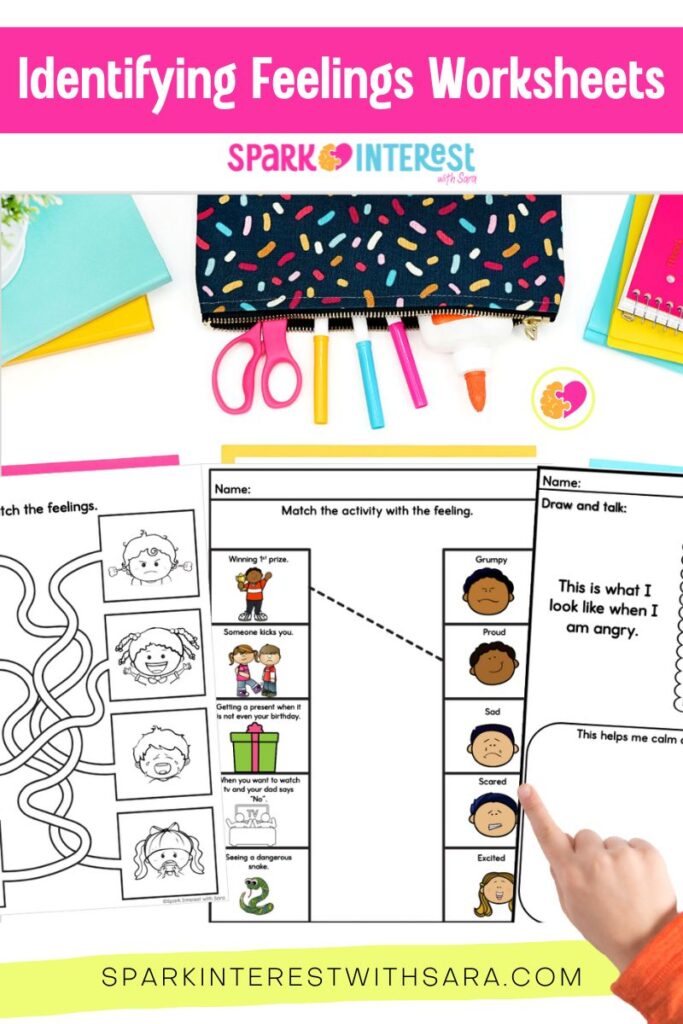
Help Students Make Connections with Each Other
Building a connected classroom community goes beyond the relationship between you and your students. It’s also about helping them form meaningful relationships with each other. Here are a few ways you can encourage peer-to-peer connection in your preschool classroom from day one:
a. Celebrate Each Child’s Talents and Interests
Invite children to share what makes them unique. You might ask families to send in photos of their child doing something they love, like riding a horse, playing a sport, baking cookies, or painting at home.
Use those photos as part of a class display or morning share time. Make that child the “expert” of their interest! If a child loves soccer, create an outdoor station and invite them to explain the rules to their classmates. This builds confidence, connection, and pride.
b. Encourage Children to Share What Matters to Them
Ask questions like:
- What makes you feel proud?
- What do you love doing at home?
- What do you want your new friends to know about you?
This opens the door for meaningful conversations and helps children feel truly seen and valued. When they share what matters to them, they begin to connect with others who share those same passions—or who are curious to learn more.
c. Incorporate Teamwork Activities for Preschool
Preschoolers are still learning how to work together, so be intentional about creating opportunities for collaboration and shared success. Incorporating teamwork games for preschool early in the year helps set the foundation for cooperation, communication, and kindness.
Here are some easy team-building ideas for preschool:
- Build a fort together using classroom materials
- Create a giant group artwork (like a shared mural or collage)
- Play partner games or relay-style challenges
- Do scavenger hunts in pairs or small groups
As children begin to rely on each other and share experiences, they naturally develop empathy, trust, and a stronger sense of classroom community.
Helping children form connections with their peers is one of the most powerful things we can do to support their social-emotional development.
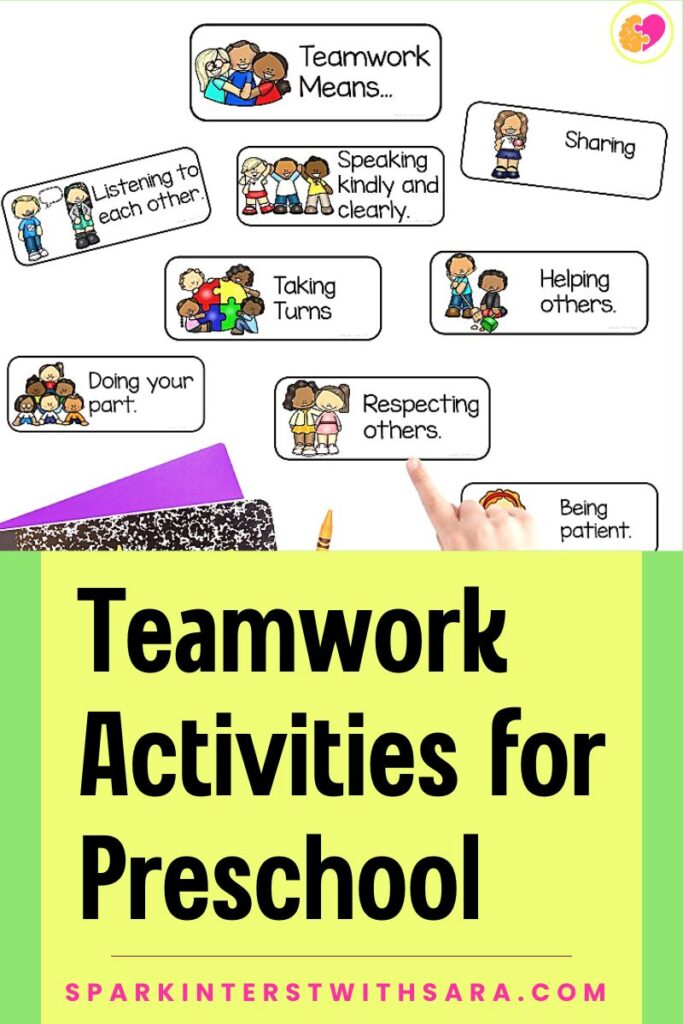
Final Thoughts: The Lesson Luke Taught Me
I often wonder where Luke is now.
He’d be a grown-up by now…maybe finishing uni, working, chasing dreams (or still pushing boundaries!).
He probably has no idea that he was the student who taught me one of the most important lessons of my teaching career.
That relationships and connection are everything.
You can have the most beautiful classroom set-up, the best planned activities, and a full schedule of learning goals, but if your students don’t feel safe, seen, and connected, none of it will truly land.
So as you step into this new school year, I want to gently remind you:
When you put relationships first, everything else flows.
Want more ideas to support connection in your preschool classroom?
💡 Check out these posts:
- 12 Simply Fun First Day of School Activities for Your Preschool Classroom
- 10 of the Best Back to School Books for Preschoolers
- 5 Ways to Easily Fit Friendship Activities into Your Day
And here are a few more reads to deepen your understanding:
Making School About Connection
Building Positive Relationships with Students: What Brain Science Says
Relationships and Child Development
One last thing before you go, Don’t forget to grab my FREE Conflict Resolution Booklet
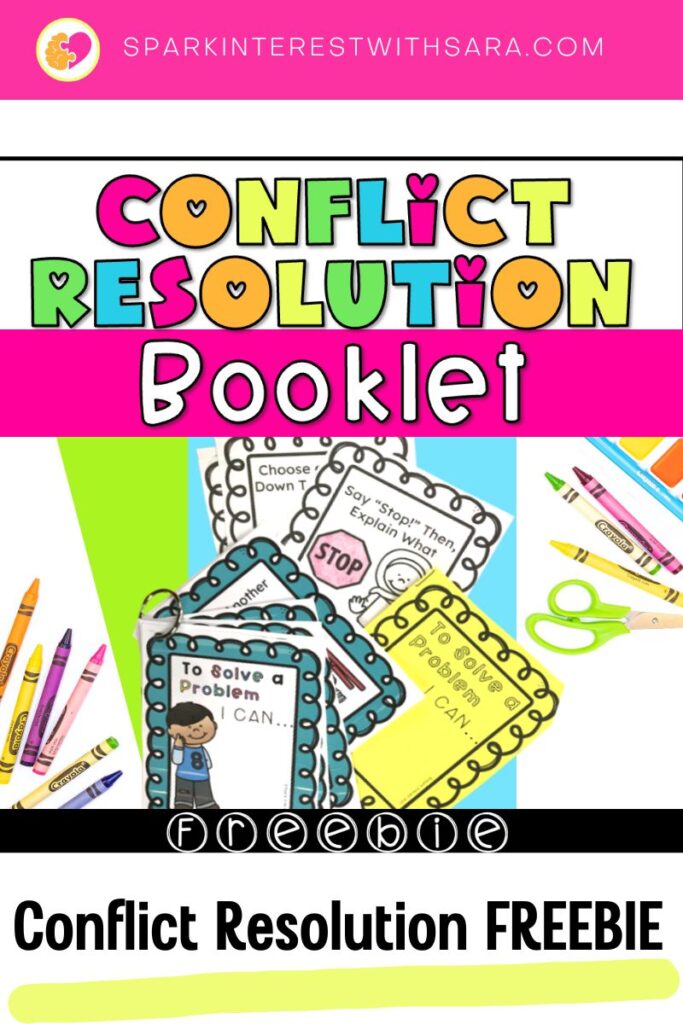
Updated on July 28, 2025 — In this post, you’ll learn how to build relationships with students in a preschool setting right from the very first day, using heart-centered, practical strategies that create connection and trust.

